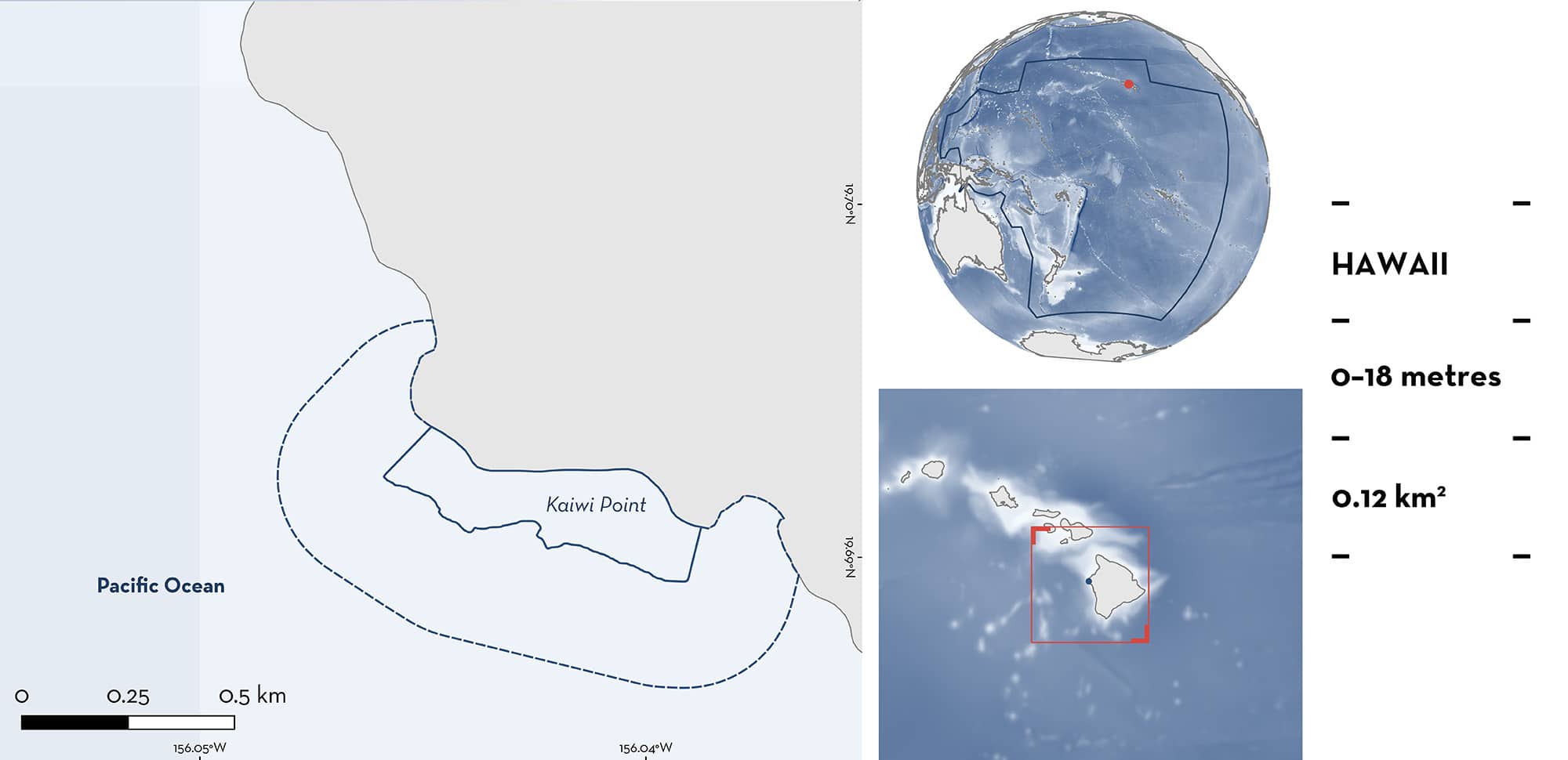ISRA FACTSHEETS
ISRA FACTSHEETS
NEW ZEALAND & PACIFIC ISLANDS REGION
Kaiwi Point
Summary
Kaiwi Point is situated on the west coast of the Big Island of Hawaii in the United States of America. The area consists of two lava caves with one having two entrances and causing a strong current to flow through the cave, and the other being larger and characterised by a rocky and sandy substrate. Within this area there are: threatened species and resting areas (Whitetip Reef Shark Triaenodon obesus).
Download factsheet
Kaiwi Point
DESCRIPTION OF HABITAT
Kaiwi Point is situated off Kohanaiki Beach on the west coast of the Big Island of Hawaii in the United States of America. The area consists of two lava caves formed by lava flow cooling upon contact with the ocean. The first cave, locally known as ‘Suck ’em up’, has two entry points and is approximately 7 m below the surface and 12 m in length. The southern entry point is larger than the northern entry point, creating a strong current that flows through the cave (Just Gotta Dive 2024). The second cave, ‘Skull cave’, is larger, with many overhangs and crevices. The caves provide unique substrate for benthic organisms to colonise, such as anemones, coral, and sea sponges.
This Important Shark and Ray Area is benthic and pelagic and is delineated from inshore and surface waters (0 m) to 18 m based on the bathymetry of the area.
CRITERION A
VULNERABILITY
One Qualifying Species considered threatened with extinction according to the IUCN Red List of Threatened Species regularly occurs in the area. This is the Vulnerable Whitetip Reef Shark (Simpfendorfer et al. 2020).
CRITERION C
SUB-CRITERION C3 – RESTING AREAS
Kaiwi Point is an important resting area for one shark species.
Between 2014–2024, Whitetip Reef Sharks were regularly sighted resting in groups of two or more individuals in the area (iNaturalist 2024). A total of 13 sighting records were compiled from online sources. There are four records from the citizen science platform iNaturalist (2014, 2022, 2023, 2024), at least eight recreational dive videos from YouTube (2014 [n = 3], 2020 [n = 2], 2022 [n = 2], and 2023 [n = 1]), and a record of a pregnant Whitetip Reef Shark with a visibly distended abdomen from Blue Planet Archives in the area. In 76.9% of online records (n = 10/13), Whitetip Reef Sharks are observed resting, and 53.8% (n = 7/13) of observations are of more than one shark (iNaturalist 2024). Sharks are most often sighted resting at the mouth of the cave or within the cave itself which contains many overhangs and crevices providing habitat for resting. Based on dive site descriptions and reviews from three dive centres (Jack’s Dive Locker 2024; Just Gotta Dive 2024; Kona Hunu Divers 2024), this area is the only location noted for predictable encounters of Whitetip Reef Sharks around the Big Island of Hawaii. This area is regarded by local dive shops as “a great place to encounter Whitetip Reef Sharks” (Just Gotta Dive 2024), highlighting the regular and predictable use of this area for resting.
Download factsheet
SUBMIT A REQUEST
ISRA SPATIAL LAYER REQUEST
To make a request to download the ISRA Layer in either a GIS compatible Shapefile (.shp) or Google Earth compatible Keyhole Markup Language Zipped file (.kmz) please complete the following form. We will review your request and send the download details to you. We will endeavor to send you the requested files as soon as we can. However, please note that this is not an automated process, and before requests are responded to, they undergo internal review and authorization. As such, requests normally take 5–10 working days to process.
Should you have questions about the data or process, please do not hesitate to contact us.


